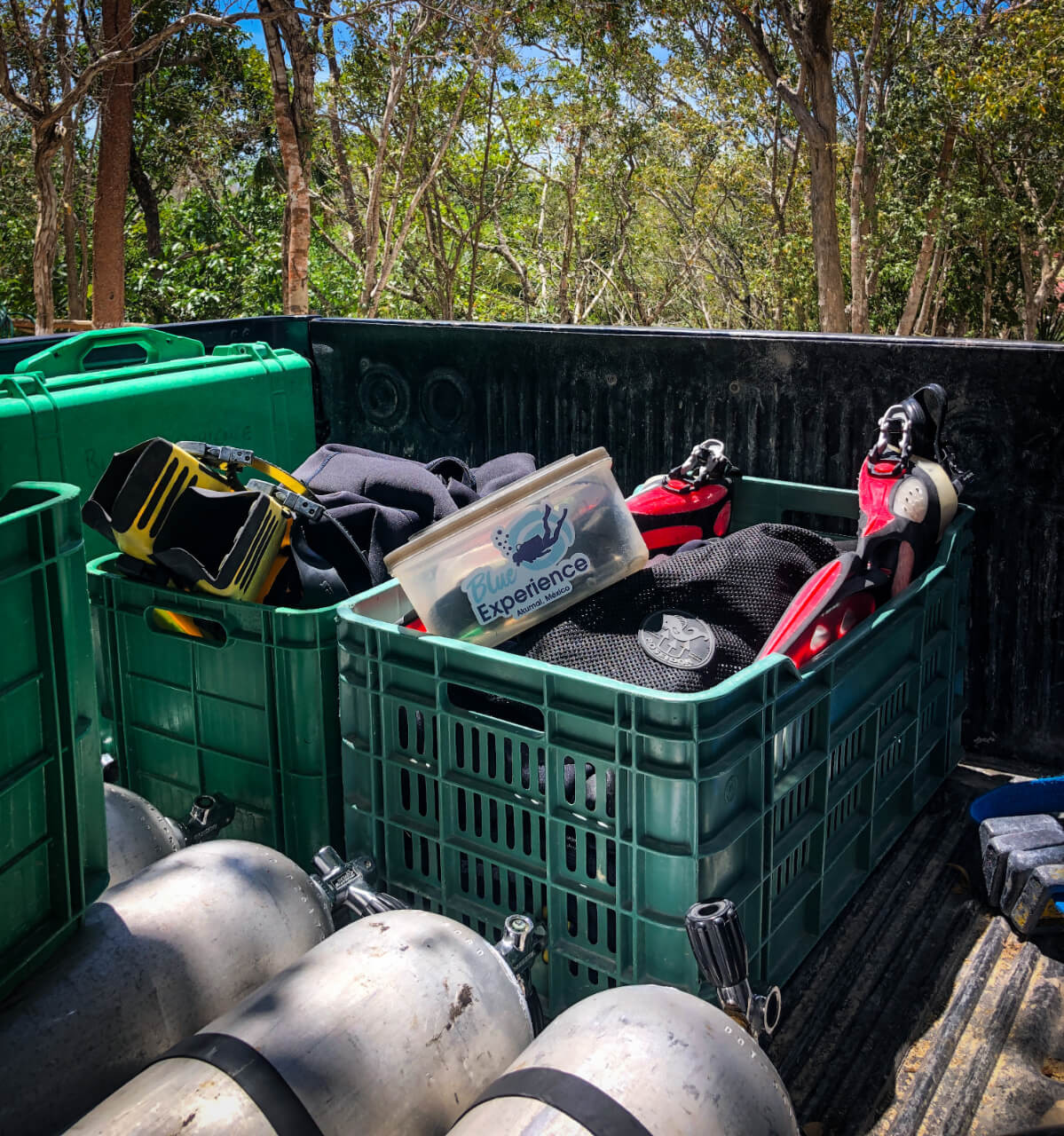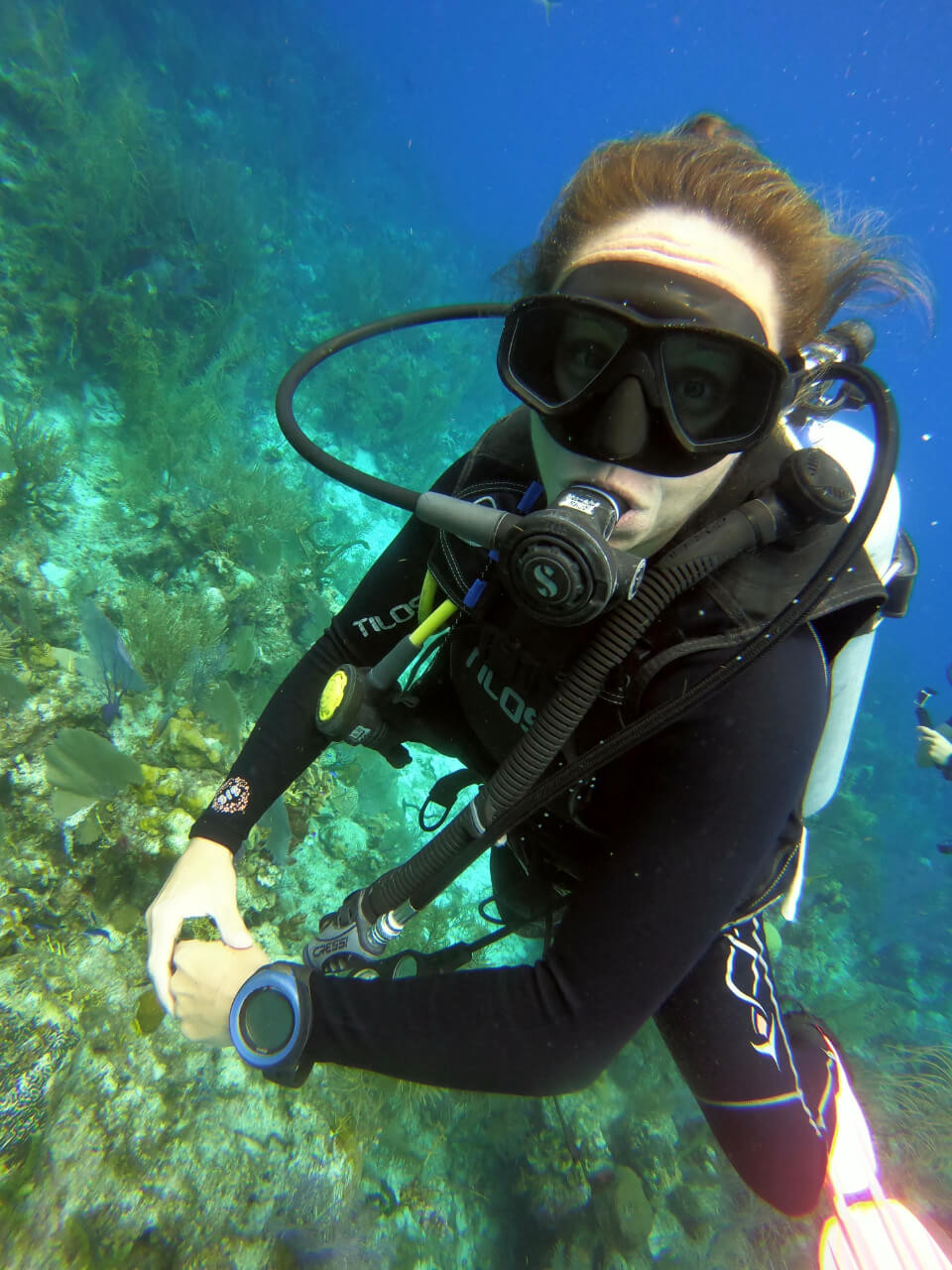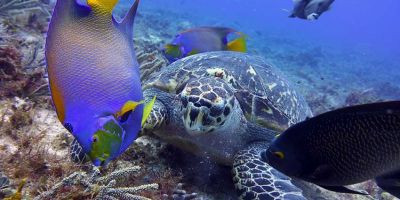Having the right scuba diving gear is important for newly certified divers, it's a step up in converting this hobby into a passion! Being equipped with the best scuba gear is crucial when submerging yourself in a new underwater adventure, for many reasons such as safety, comfort, and of course, enjoyment! However, with so many options available, it can be overwhelming to determine what gear you need, but you're in luck! This guide will help you make the best decisions when it comes to your new equipment, by breaking down the essential scuba diving equipment. Our goal is to be your go-to checklist to help ensure you have all the essential gear each time you embark on a thrilling underwater journey.

Whether you're a beginner planning your first dive or a seasoned diver looking to upgrade your gear, this guide will ensure that you are well-prepared for your underwater explorations.
Your firsts in scuba gear, the basics
When it comes to scuba diving gear, starting with the basics is essential. These foundational items enable you to navigate the underwater realm with ease, let’s explore the key components you need to consider -
1. Mask
A well-fitted mask is crucial for a clear and unobstructed view underwater, it creates an air pocket in front of your eyes, allowing you to see clearly while keeping water out. This is the essential item that will affect your underwater comfort level, so make sure to try out different models before investing in one.
What should you look for?
- Firstly, a mask with a skirt made of high-quality silicone provides comfort and a watertight seal.
- Consider features like tempered glass to help withstand the pressure of the dives
- Note that a mask with clear/light-colored silicone lets more light in and helps improve peripheral vision, most beginners prefer it.
- Underwater photographers often prefer a dark mask. Its tinted lenses reduce glare, while the black skirt blocks reflections, enhancing their ability to capture underwater images.
- Check for adjustable straps and buckles that allow you to customize the fit of the mask easily. Quick-adjust buckles make it convenient to tighten or loosen the straps underwater.
2. Snorkel
While not a mandatory piece of equipment for scuba diving, having a snorkel as a diver provides added versatility and convenience. It ultimately comes down to personal preference and the type of diving you plan to do, If you anticipate engaging in activities where a surface breathing option is advantageous, investing in a snorkel would be worthwhile. It can serve as a backup breathing option when at the surface, conserving your scuba tank's air supply. Additionally, snorkels can be useful for surface swimming, underwater exploration in shallow depths, or conducting surface checks before or after a dive.
You may think of it as a simple piece of curved plastic, just wait until you enter your first dive store and find out the array of options available. But don’t worry, keep on reading to figure out - What should you look for?
- Comfort is key. Don’t overthink it, this is not the piece of equipment you should spend hours researching. As long as it fits comfortably in your mouth, allowing for easy breathing as well as minimizing jaw fatigue during extended periods of time, you should be ok!
- An important feature is to look at how the snorkel attaches to your mask, before making a purchase make sure that both are compatible with each other
3. Fins
Fins are the ultimate underwater accessories that make you feel like a graceful creature of the sea. These magical flipper-like extensions are the piece of gear that will carry the strength of your leg muscles to your feet, helping propel you through the water, which is 800 times denser than air. Now it’s time to dive into the fin-tastic world of fins
What should you look for?
- They should fit snugly but comfortably on your feet. Should not be too loose or too tight, as both can cause discomfort and affect your swimming efficiency. Try different sizes and models to find the one that provides a secure fit without pinching or excessive pressure.
- Look for fins with a foot pocket that accommodates your foot shape well. Some fins have an open-heel design with an adjustable strap, while others are full-foot fins that cover the entire foot. Choose the style that suits your preferences and ensures a secure and comfortable fit
- Fins come with various blade types, each offering different characteristics. Paddle blades provide more power and are suitable for strong kicks, while split blades offer a more efficient and relaxed swimming style. Consider your swimming technique and desired level of propulsion when selecting the blade type.
- Fins are commonly made from materials like rubber, silicone, or composite materials. Rubber fins are durable and provide good propulsion, while silicone fins offer increased flexibility and comfort. Composite materials provide a blend of durability and flexibility. Consider your diving conditions and personal preferences when choosing the material.
4. Wetsuit
Designed to provide insulation, protection, and buoyancy control, a wetsuit is your ticket to comfortable and thrilling dives in various water temperatures. Beyond their sleek and stylish appearance, wetsuits play a pivotal role in ensuring your comfort, safety, and enjoyment during aquatic adventures. Keep in mind that wetsuits may fit differently among brands, so it's important to refer to size charts or seek expert advice when making your selection.
What should you look for?
- Consider the appropriate thickness of neoprene for the water temperature you'll be diving in. Thicker suits provide better insulation in colder waters, while thinner suits are suitable for warmer conditions. Look for high-quality neoprene, a flexible and insulating material that ensures comfort and durability.
- The wetsuit should fit snugly but comfortably, without restricting your movements. A proper fit ensures that the wetsuit effectively traps a thin layer of water against your skin, which is then warmed by your body heat to keep you comfortable underwater. Ensure the wetsuit follows your body contours closely and doesn't have excessive looseness or gaps.
- Decide on the type of zipper configuration based on your preference and ease of use. Back-zip wetsuits are easy to put on and take off, while front-zip suits provide a more streamlined profile and minimize water entry. Zipless suits use innovative closure systems that eliminate the need for zippers altogether, offering enhanced flexibility and reducing water flushing.
- Consider additional features that enhance comfort and functionality. These may include knee pads for added protection and durability, ankle or wrist seals to minimize water entry, and integrated hoods for colder water conditions. Evaluate which features are essential for your specific diving needs and choose a wetsuit that includes them.

Gear for Enhanced Exploration
Now that you've familiarized yourself with the fundamental scuba diving gear in the previous section, it's time to take your underwater exploration to the next level. In this second section, we'll delve into the realm of more advanced diving equipment. From high-tech devices to specialized tools, these gear essentials will enhance your diving experience and open up new possibilities for adventure. Get ready to dive deeper as we explore the world of advanced scuba diving gear!
5. Dive Computer
Unleash the power of technology with a dive computer, your ultimate companion for underwater exploration. This compact device not only tracks your depth, bottom time, and ascent rate but also calculates decompression limits, ensuring a safer and more efficient dive. Dive computers provide real-time data and customizable settings, allowing you to monitor crucial information and maximize your time underwater.
What should you look for?
- Opt for a dive computer with a clear and easy-to-read display. The information should be presented in a format that is intuitive and legible underwater. Look for large digits, backlighting for low-light conditions, and a high contrast display that allows for quick and effortless data interpretation.
- Consider the dive modes and features offered by the dive computer. Basic dive computers typically provide functions like depth, dive time, and no-decompression limits. Advanced models may offer additional features such as gas switching for multiple gas dives, integrated compass, dive planning capabilities, and wireless air integration to monitor your tank pressure. Choose a dive computer that aligns with your diving style and goals.
- As a vital piece of diving equipment, the dive computer should be durable and able to withstand the rigors of underwater environments. Look for a robust construction, preferably with a rugged housing and scratch-resistant materials. It should have a high level of water resistance, typically rated to a depth greater than your maximum diving depth.
- Consider the size and comfort of the dive computer. It should be compact and lightweight enough to be worn comfortably on your wrist or attached to your BCD. The strap or wristband should be adjustable, secure, and comfortable for extended periods of wear. Remember, you'll want a dive computer that feels comfortable and unobtrusive while providing easy access to information.
6. Buoyancy Control Device (BCD)
Take control of your buoyancy with a trusty BCD, the diving gear that keeps you stable and in command underwater. This essential tool allows you to adjust your buoyancy at different depths, enabling effortless movement and precise control. The BCD also serves as your flotation device and provides attachment points for other gear, such as your regulator and tank.
What should you look for?
- The BCD should fit you properly and be comfortable to wear throughout your dives. Look for adjustable straps and buckles that allow you to customize the fit to your body shape and size. Ensure that the BCD doesn't restrict your movements and provides freedom of arm and shoulder motion.
- The lift capacity of the BCD should be suitable for your diving needs. Consider factors such as your body weight, the weight of your scuba gear, and any additional equipment you may carry, such as underwater cameras or dive lights. Choose a BCD with enough lift capacity to ensure proper buoyancy control at various depths.
- Many modern BCDs offer integrated weight systems, allowing you to carry your dive weights within the BCD itself. This eliminates the need for separate weight belts and provides a streamlined and comfortable diving experience. Check for easy-to-use weight pockets and secure weight release mechanisms.
- Evaluate the dumping and inflation system of the BCD. It should provide efficient and reliable control over your buoyancy. Look for easily accessible and intuitive dump valves that allow you to release air quickly and precisely, the inflation system, usually controlled by a power inflator, should be easy to operate, enabling you to add or release air effortlessly.
- The BCD should be made from durable materials and constructed to withstand the demands of diving. Check for robust stitching, reinforced components, and high-quality materials that resist wear and tear. A durable BCD ensures longevity and reliability, providing peace of mind during your dives.
7. Regulator Set
Breathe easy and dive confidently with a reliable regulator set, the lifeline that ensures a constant supply of breathing gas during your underwater adventures. Consisting of a first stage, second stage, and alternate air source, the regulator set delivers the air you need at every depth.
Look for a regulator that provides smooth, effortless breathing, excellent performance in different diving conditions, and reliable cold-water capabilities.
What should you look for?
- Pay attention to the first stage of the regulator, which connects to the scuba tank. Look for features such as balanced or environmentally sealed designs, as they provide better performance and resistance to freezing in cold water.
- Consider the second stage, which is the part you breathe from. Look for a balanced or adjustable second stage that delivers smooth and effortless breathing. Features like adjustable breathing resistance or venturi control can enhance your comfort and control underwater.
- Check the length and flexibility of the regulator hoses. Ensure they are long enough to provide comfortable movement and proper hose routing, but not excessively long to avoid entanglement. Flexible hoses offer better comfort and ease of movement underwater.
- If you use a dive computer, check if the regulator set is compatible with integrated dive computer consoles or hoseless transmitters. This allows for streamlined information display and eliminates the need for additional gauges.

The essential accessories
While the scuba diving essentials like masks, fins, and regulators are crucial, there are additional accessories that can elevate your underwater adventures. Let's dive into some must-have accessories that enhance safety, convenience, and overall enjoyment during your dives.
8. Dive Mask Defogger
A foggy mask can significantly impair your visibility underwater, leading to frustration and potential risks. A dive mask defogger is a specially formulated solution that prevents the formation of fog on the mask lenses. Look for defoggers that are easy to apply, long-lasting, and environmentally friendly. A clear, fog-free mask ensures a clear view of the mesmerizing underwater world.
9. Dive Light
Diving in low-light or dark conditions requires a reliable dive light. It illuminates your path, enhances visibility, and reveals the vibrant colors of marine life. Look for dive lights that offer sufficient brightness, a long battery life, and a durable construction that can withstand underwater pressure. Consider features like adjustable beam intensity, different lighting modes, and rechargeable options for added convenience.
10. Dive Knife
A dive knife is a versatile tool that can come in handy during various diving situations. It serves multiple purposes such as cutting through tangled ropes, fishing lines, or seaweed, and can be used for self-defense in rare instances. Choose a dive knife with a sharp, corrosion-resistant blade, a secure locking mechanism, and a comfortable grip. Consider the mounting options, such as leg straps or sheaths, for easy access and safe storage.
11. Dive Bag
A well-designed dive bag is essential for storing and transporting your scuba gear. Look for a bag that is spacious enough to accommodate all your equipment, including your wetsuit, BCD, regulators, fins, and accessories. Consider durable, water-resistant materials and reinforced handles or straps for easy carrying. Look for compartments or pockets that allow for organized storage of smaller items. Some dive bags even come with wheels for effortless transport.

These accessories enhance your comfort, safety, and overall diving experience. Whether it's keeping your mask fog-free, illuminating your path with a dive light, carrying essential tools like a dive knife, or efficiently organizing your gear in a dive bag, investing in these accessories can make a noticeable difference in your underwater adventures.
Remember, while these accessories can greatly enhance your dives, always prioritize safety, proper training, and adherence to diving protocols. With the right accessories and a sense of adventure, you're ready to explore the breathtaking underwater world with confidence and excitement.


























